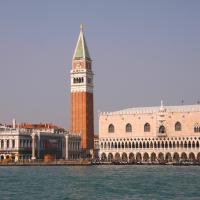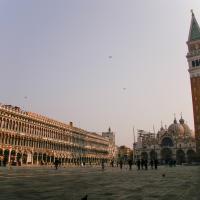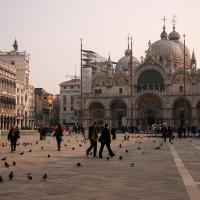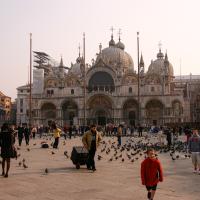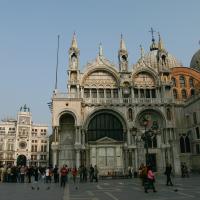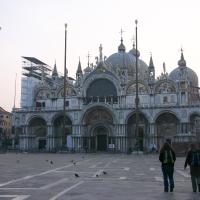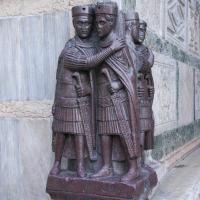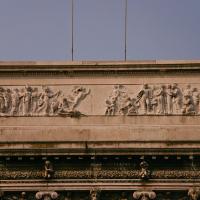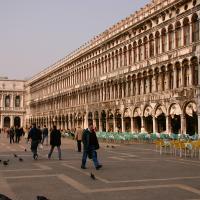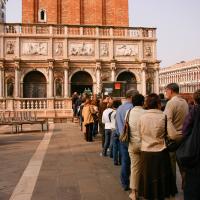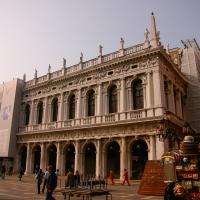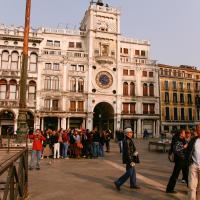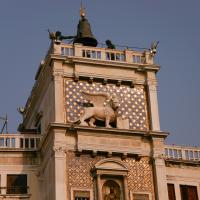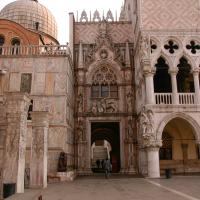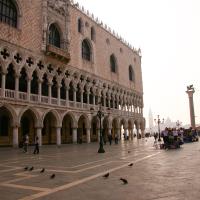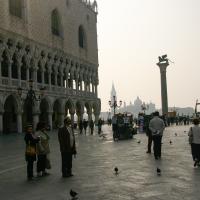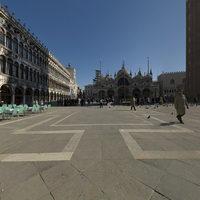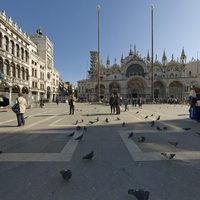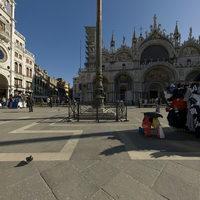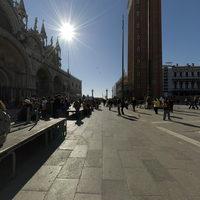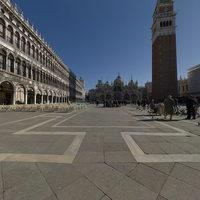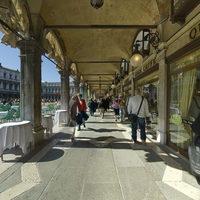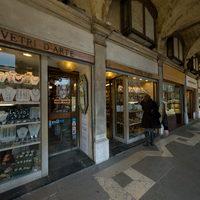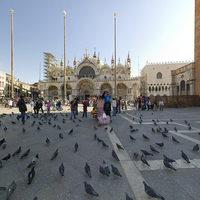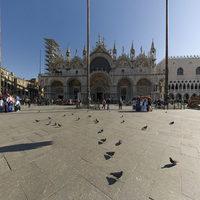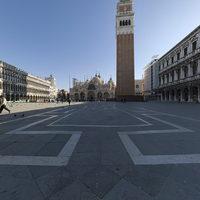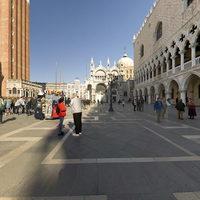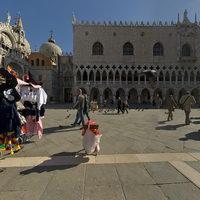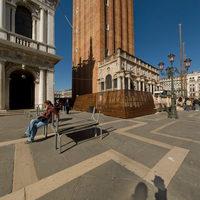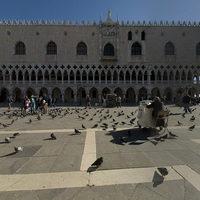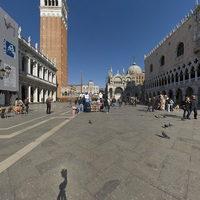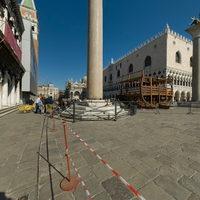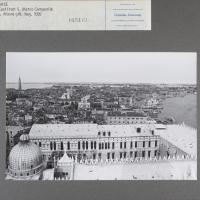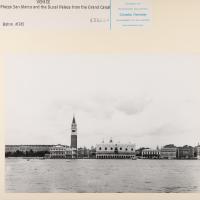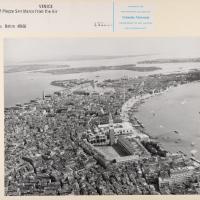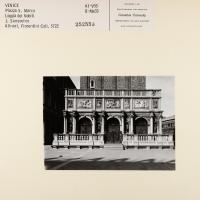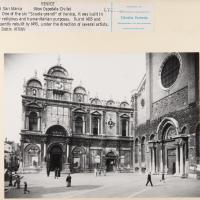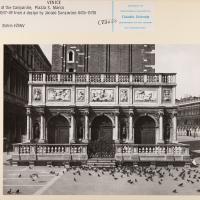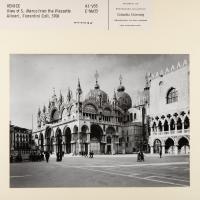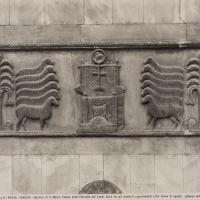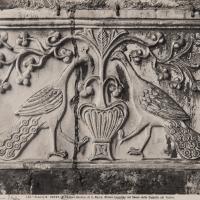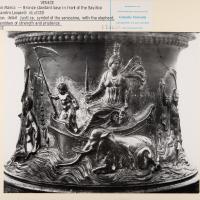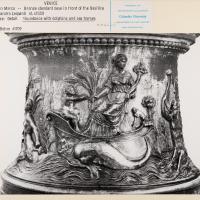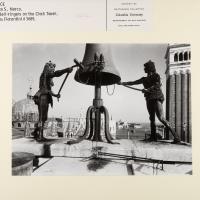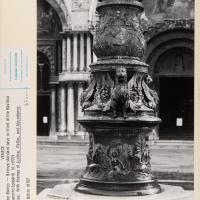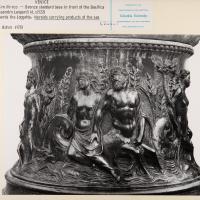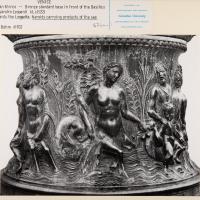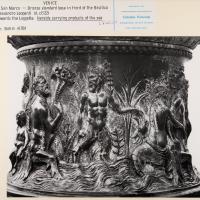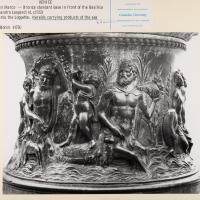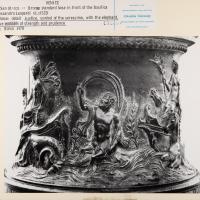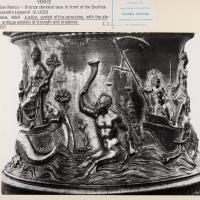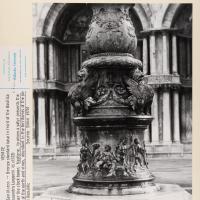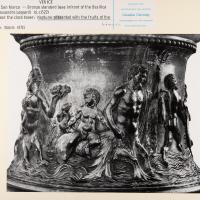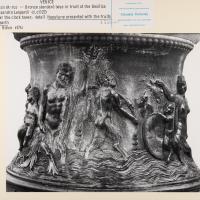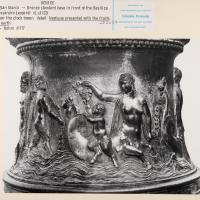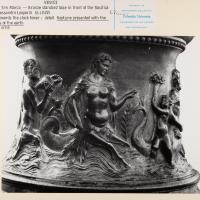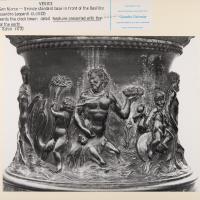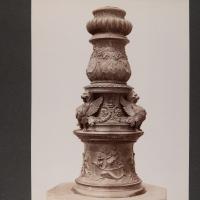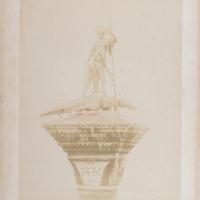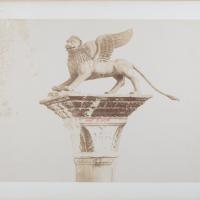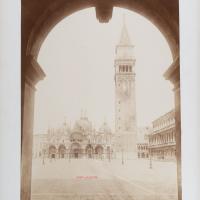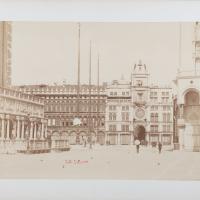Overview
The Piazza was paved in the late 12th century with bricks laid in a herringbone pattern. Bands of light-colored stone ran parallel to the long axis of the main piazza. These lines were probably used in setting up market stalls and in organizing frequent ceremonial processions. In 1723 the bricks were replaced with a more complex geometrical pavement design laid out by Venetian architect Andrea Tirali. This trapezoidal piazza features the basilica on one end and connected buildings with loggia (the Procuratie) on the other three sides. The Piazza is dominated at its eastern end by the Basilica San Marco. The Piazzetta dei Leoncini is an open space on the north side of the church named after the two marble lions (presented by Doge Alvise Mocenigo in 1722), but now officially called the Piazzetta Giovanni XXIII. The neo-classic building on the east side adjoining the Basilica is the Palazzo Patriarcale, the seat of the Patriarch of Venice. The Clock Tower (Torre dell'Orologio), completed in 1499, sits above a high archway where the street known as the Merceria (a main thoroughfare of the city) leads through shopping streets to the Rialto, the commercial and financial center. To the right of the clock-tower is the closed church of San Basso, designed by Baldassare Longhena (1675), and sometimes open for exhibitions. To the left is the long arcade along the north side of the Piazza, with the buildings known as the Procuratie Vecchie, the old rooms formerly the homes and offices of the Procurators of Saint Mark, who served the high offices of state. The Procuratie Vecchie is the work of Mauro Coducci. The buildings on the opposite side (near to the Campanile) are known as the Procuratie Nuove, designed by Jacopo Sansovino in the mid 16th century but finished after his death by Vincenzo Scamozzi and Baldassare Longhena. The ground floor has shops and as well as the Caffé Florian, first coffeehouse in Europe. The two great granite columns in the Piazzetta are usually said to have been erected about 1170, but it is now thought more probable that this was done in the time of Doge Ranieri Zeno (1253–68); the bases and capitals are 13th century. Their origin is unknown, but Chios is suggested as possible. The lion is first mentioned in a decree of the Great Council in 1293 and the wording makes it clear that it was already on the pillar at that date. A statue of St Theodore (but not the present statue) was in place by 1329. Both sculptures are composites. The Piazza San Marco is known as the "the Drawing Room of Europe" and is one of the most iconic locations in Italy.
- Lorenzetti, Venice and Its Lagoon: Historical-Artistic Guide (Rome: Istituto Poligrafico dello Stato, 1961) as translated and with supplementary content by Taryn Marie Zarrillo, 2012/13

